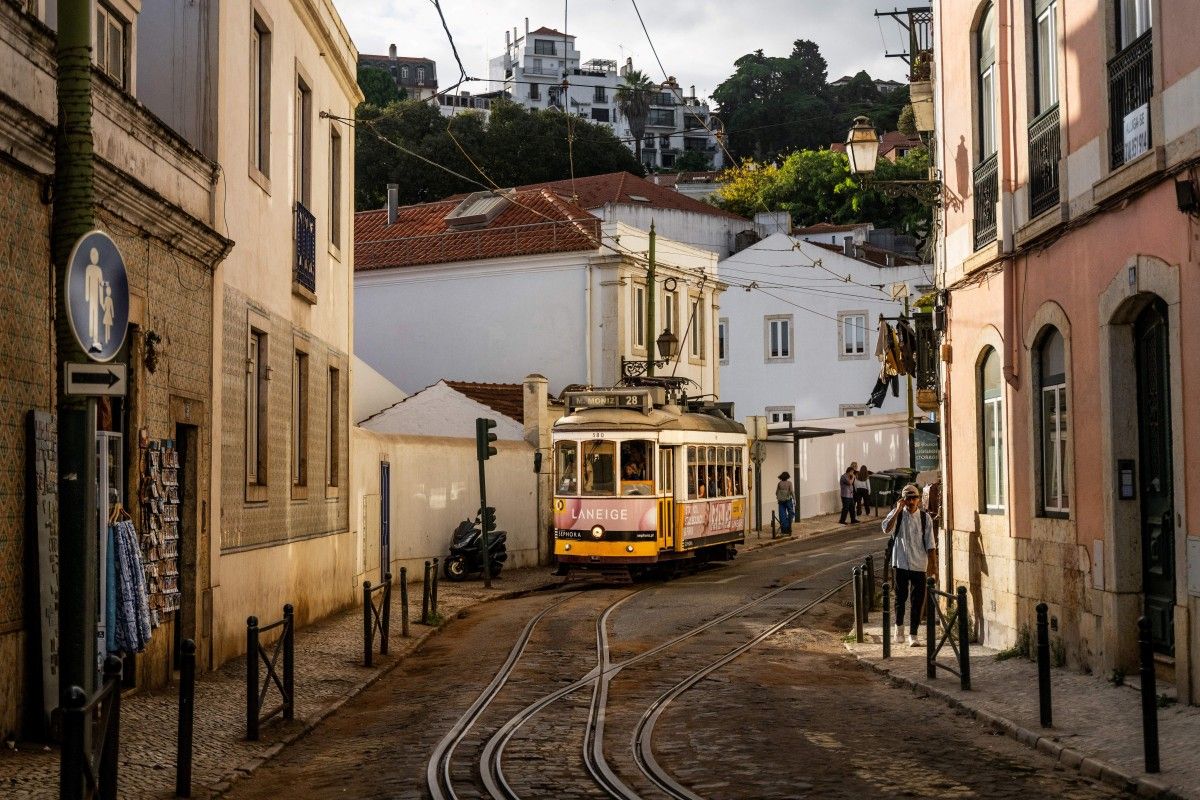
The trams of Lisbon, a symbol of bygone charm, fuel the residents' discontent in the face of tourist invasion. Caught between the fascination of visitors and the exasperation of locals, the capital oscillates between tradition and overtourism.
In the winding streets of Lisbon, the screeching of the small yellow trams paints a picturesque tableau of the Portuguese capital. Every morning, at Martim Moniz Square, tourists and locals flock to the legendary tram number 28, whose route through the city’s hills offers a unique glimpse into Lisbon's ancient charm. However, this popularity increasingly frustrates residents, who struggle to find their place in their own city.
Mixed Success
At the end of the 19th century, the first horse-drawn trams were already traversing these same hills of Lisbon. Today, carefully restored vehicles, with wooden floors and guillotine windows, carry around fifty passengers at a time. Patrice Schneider, a 71-year-old Swiss tourist, insists, “It’s a must-do!” This sentiment is echoed by Sandra Billy, a Frenchwoman eager to experience this iconic route.
The tram’s journey winds through narrow alleys, sometimes brushing against pastel facades, and opens up to spectacular views of the Tagus estuary. This experience, praised by travel guides, attracts millions of visitors, with nearly nine million in 2023 alone. However, this tourist success has led to tensions in popular neighborhoods like Mouraria, where Luisa Costa, a resident, laments, “This tram is no longer for us; it’s reserved for tourists!”
Bittersweet Reality
In response to this situation, authorities have introduced electric minibuses for residents and red trams aimed at tourists, but the latter are being avoided due to their high fares. For 82-year-old retiree Fatima Valente, these initiatives are not enough: “The situation keeps getting worse,” she asserts.
Local voices are rising, calling for a more accessible and reliable transport network for everyone. Fernanda Cancio, a journalist for Diario de Noticias, denounces in an op-ed that the tram has become “a toy” for tourists that fuels social media at the expense of residents who truly need it.
Sustainable Transport Mode
Carris, the Lisbon transport company, acknowledges the difficulty of this coexistence. Some lines, abandoned in the 20th century in favor of buses, are being reactivated to meet demand. “The trend today is to recover infrastructure where it is possible,” explains Ema Favila Vieira, a spokesperson for Carris, emphasizing that these trams remain a sustainable and necessary mode of transport for the city.
With its five historical lines and a sixth running along the river, the Lisbon tram network symbolizes both the past and the future of the capital, caught between tourist attraction and the needs of its residents.
With AFP
Comments